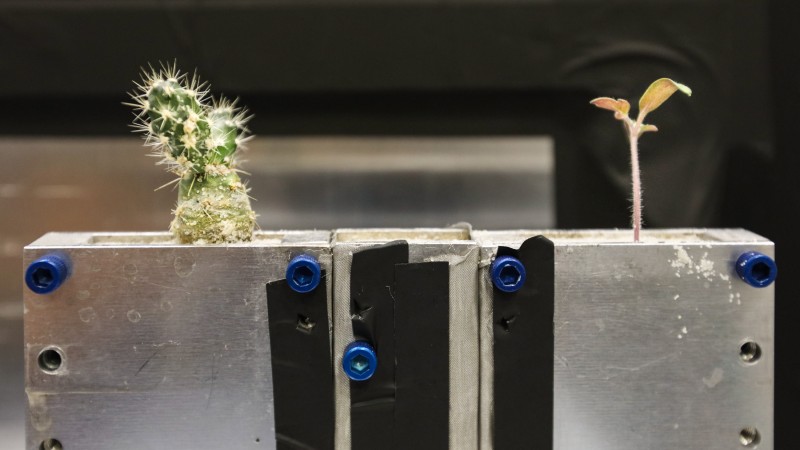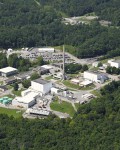Plants are chatty creatures. In the last decade, researchers have shown plants communicate using underground fungal networks to exchange chemical information. However, exactly how that process works at the microscopic level is not well understood.
Answering this question could have a big impact on both plant ecology and agriculture, which is why professors Kathryn and Jonathan Morris from Xavier University are using neutron scattering at the Department of Energy’s (DOE’s) Oak Ridge National Laboratory (ORNL) to observe firsthand how these info-chemicals travel along tiny, pipe-like networks called fungal hyphae. Whether the messages move passively along the outside of those fungal networks or the fungi deliberately locate and absorb info-chemicals for transportation remains unclear.
“Basically, info-chemicals are chemical compounds that plants release into the soil to warn each other about potential threats and can even limit the growth of other plants. We’re trying to figure out if these info-chemicals move the way water flows in soil, or if they move independently of that flow,” said Kathryn Morris.
For this experiment, the researchers created a small apparatus in which a cactus and a tomato plant are rooted in the same soil matrix that features a fungal network like the ones connecting plants in the wild. By loading that soil with heavy water and info-chemicals, and adjusting the amount of light each plant receives, the researchers can control when each organism drinks to observe exactly how the info-chemicals and the water are moving between the plants.
Neutron imaging is ideal for this type of research because neutrons are sensitive to hydrogen, which both the plants and info-chemicals contain in abundance. In contrast, the soil does not contain a lot of hydrogen. That means the info-chemicals and plant roots show up as dark, clear, and distinct “shadows” in the radiographic images the researchers generate with the IMAGING instrument at ORNL’s High Flux Isotope Reactor (HFIR).
“The info-chemical compound contains hydrogen, and the heavy water used in the experiment contains the deuterium isotope of hydrogen. The difference in isotope content is important because the neutrons scatter strongly from the hydrogen and not the deuterium,” said Jonathan Morris. “That makes the info-chemical stand out as a distinct shadow in the collected neutron radiological images, whereas the heavy water appears to be comparatively transparent. This allows us to easily distinguish the movement of the info-chemical from the heavy water and study its behavior.”
Understanding exactly how info-chemicals move between plants along these fungal networks could have important agricultural applications. For example, if certain fungi transport info-chemicals between only certain plants, farmers could take advantage of those networks to tactically deploy pesticides that would affect particular plant systems, destroying unwanted weeds without damaging their crops.
“This is really exciting stuff. What we learn here will significantly impact our understanding of ecology,” Jonathan Morris said.
HFIR is a DOE Office of Science User Facility. UT-Battelle LLC manages ORNL for DOE’s Office of Science. The Office of Science is the single largest supporter of basic research in the physical sciences in the United States and is working to address some of the most pressing challenges of our time. For more information, please visit http://science.energy.gov/.—by Gage Taylor






